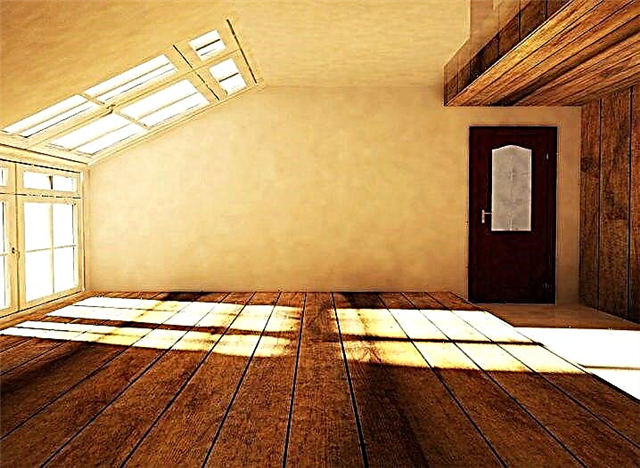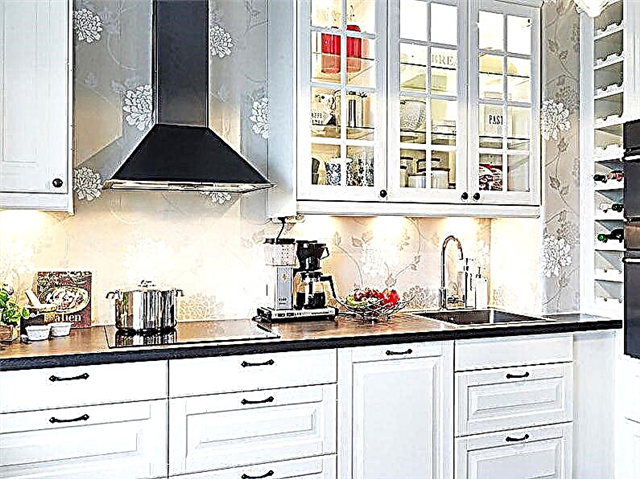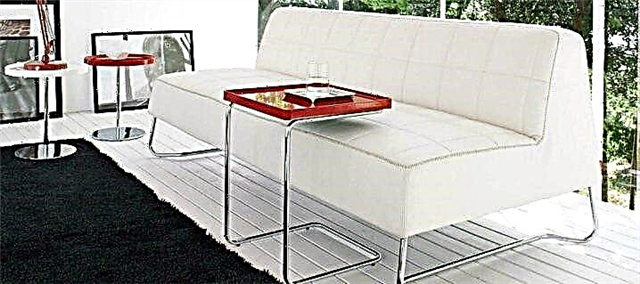
Any repair work is completed with a decorative finish, thanks to which the room acquires a beautiful look and pleases others with its interior. Today, the construction market is represented by a gorgeous selection of finishing materials, but lining deserves special attention among them. It not only has an original design, but also reliably protects walls, acting as a good sound and heat insulator. In addition, this material does not require additional processing and is easy to install.
Features
Lining is a board of various shapes and sizes, which is intended for interior decoration. The product is characterized by high technical and operational properties.

Typically, a lining is made of natural wood, so it does not contain chemical components and is absolutely harmless to human health.
Such material serves for a long time and after installation creates a healthy microclimate in the room.
It has major advantages.
- Beautiful appearance.
- Resistance to temperature differences.
- High sound insulation.
- Huge scope. As a rule, a decorative product is used for interior wall cladding in apartments, houses, cottages, balconies and terraces.
- A wide range of colors and textures. Thanks to these qualities, products can be chosen for any style design of rooms.
- Affordable price. Covering one square meter will cost much less than finishing with other expensive materials.
In addition, the lining can be attached to the walls in different ways, which allows you to create unusual compositions in the interior. As for the shortcomings, they are few. The main disadvantage of the product is low moisture resistance. But despite this, lined walls in baths and saunas can last for many years. Also, when humidity changes, the slats decrease or expand in volume, quickly ignite and are unstable to insects. To extend the life of the material, it is recommended to additionally cover it with a protective compound.


A wooden board is considered a classic lining option, but thanks to modern production technologies, products made from other materials can also be found on sale recently. They may differ in design, but all of them are united by a single installation principle and shape. Depending on the type of raw material that is used to create the lining, there are several types.
Wooden
Such material is characterized by high environmental friendliness, creates a breathable coating on the surface of the walls and it can be painted or opened with varnish.
Since wood is of various classes, wooden lining is also divided into 4 types.
- Extraclass - the board has excellent quality, has no defects, is reliable in operation, but is expensive. As a rule, it is used not only for internal but also for external wall cladding. The thickness of such a lining allows you to use the material for frame construction, its design is characterized by a beautiful design.
- "A" class - on such boards small knots may be present, but they are in no way inferior in quality to extra-class products.
- "B" class - A fairly durable finishing material, but various defects are noticeable on it. Since the product has high strength, it is used for wall cladding in baths or on balconies.
- "C" class - It is considered the cheapest board, it is often chosen for finishing non-residential premises and inside farm buildings.

A wooden board may vary in shape., therefore, distinguish between: lining and ordinary lining. Eurolining is as close as possible to a natural tree. Such a board under a log looks original in the interior, which can be used for decoration inside a wooden house. No less popular are the options for decorating rooms with the material in the form of a bar. As for the usual lining, it has standard sizes and shapes.


Plastic
Such decorative panels are best suited for cladding ceilings, as the material is too fragile and on the walls can not withstand large mechanical stresses. Dies produce different colors and textures, so they harmoniously fit into any style of the room, filling the space with notes of modernity.
It is best to install a plastic lining horizontally, thus the room area will visually expand.
It is undesirable to use this type of material for wall sheathing in the kitchen or in the bathroom, since increased humidity in these rooms will reduce the performance characteristics of the finish.
Lining from plastic has many varieties and differs not only in design, but also in color, installation method. Boards with imitation of marble, granite and natural wood are very popular. The thickness of the plastic lining is significant, the strength is high, therefore, it is also installed outside the premises.

Externally, the material is very similar to a natural tree, quickly mounted and presented with a chic choice of colors. Ideal for decorative ceilings and walls. The only drawback of such a board is its instability to moisture: when wet, it begins to deform and delaminate.


Lining can be produced not only in different shapes and sizes, but also differ in the presence or absence of chamfers.
Depending on this, the material is divided into the following types.
- Plain - characterized by a flat surface. On the front side of the board there is an additional chamfer, thanks to which, at the end of installation work, seams are created on the surface. As a rule, a chamfer is angular and rounded.
- "Calm" - there is no chamfer in such a lining, therefore, when sheathing, the joints are invisible. The material perfectly imitates the walls of the timber and is available in a thickness of not more than 25 mm.


- "Landhouse" - is one of the most expensive varieties of lining, as special processing technologies are used for its manufacture, and the front side of the board is milled. As a result, wood patterns are formed on the outside of the board in the form of knots and carvings.
- "Block house" - is a profile due to which it is possible to imitate the lining of timber. Since the board has a rounded front part, after its assembly the wall will take the form, as if the house is built from a real log.


- "American" - in such a lining a smooth transition between the chamfer and the stud is made, so the product has the form of siding panels.

- Bilateral - both parts of such a board are made face. As a rule, it is used when it is necessary to sheathe small partitions.

Which is better
Lining for interior decoration is represented on the construction market by a huge assortment, so each of its types differs not only in unique design, but also in technical characteristics. To make the right choice and determine which of the materials is the best, you need to consider many nuances.
Currently, manufacturers produce lining from both hardwood and coniferous species. A board made of pine and other conifers contains many essential oils and resins that protect it from mold and mildew. In addition, such a lining serves for a long time, is easily processed and has an unusual texture. Also, products from conifers have high thermal insulation and fill the space with a pleasant smell. Therefore, if you need to beautifully decorate the interior inside the house or apartment, then the best option is not to choose.


If you plan to finish a sauna or bath, then you can give preference to a lining made of hardwood, it can also be sheathed and a toilet. After special processing, such a board does not emit tar, withstands high temperatures and is not afraid of humidity. Oak planks are in great demand among masters: although it is expensive, the price is justified by quality. In a private house, such material is perfect for decorating slopes and the second attic floor.

For cladding the walls of a country house or cottage, you can also use a lining of birch or linden. A pleasant shade of these types of wood will allow not only to embody the interesting design of the room, but also create a special atmosphere of home warmth and coziness in the room. The decorative decoration of the walls with the clapboard in the hallway, bedroom, bathroom looks beautiful, it is also suitable for the corridor, and the doors finished in this way will become a real decoration.
In a country house built of timber, you can sheathe such a board not only the walls of the premises, but also the place of the doorway.
Tips & Tricks
In order for the decorative finish of the lining to last a long time and delight with its beauty, it is necessary not only to choose the right material, but also to know the technology of its installation, to study reviews.


Since the construction market offers a huge selection of lining, it will be difficult to determine the purchase.
To avoid mistakes and quickly sheathe the walls with your own hands, it is enough to follow simple recommendations.
- Before you purchase the material, you must carefully check it for the absence of factory defects. To do this, you need to look at all the boards in the package, since the front lamellas can be ideal, and inside there will be a marriage. In this case, the panels should be smooth, without curvature. If the board has deformations, then the purchase should be abandoned, because problems may arise in the future with its installation.
- The lining comb and puzzles should not have chips, knots and cracks. You can check the integrity of the locks with a kleimer.
- To determine the length of the lining, it is necessary to calculate in advance the surface area that is planned to be sheathed. As a rule, the length of the boards is from 30 cm to 6 meters. The width of the material also varies. A wide lining is more prone to deformation, so for decorative finishes it is best to purchase a board of various sizes. This will simplify the installation process and allow you to create an interesting effect in the interior.
- Wooden lining can be combined with other types of finishes, that is, one of the walls is sheathed with a natural board, and the other is glued with wallpaper or covered with plaster.

- Lining should be purchased taking into account the characteristics of the premises where it is planned to be installed. Since some types of material are unstable to moisture and temperature changes.
Beautiful examples
Today, lining has found wide application not only in construction, but also in decorative decoration of premises. To prevent the interior of the apartment from acquiring the “sauna effect”, the decoration of the walls and ceiling must be done correctly, taking into account the general style of the rooms and the color scheme. If the room is dominated by too bright colors, then for lining the clapboard, it is advisable to choose pastel shades of the boards.


For living rooms, a brown lining is considered a good option. But in order to emphasize the beauty of natural wood, the room should have good lighting. At the same time, it is recommended to sheathe walls only in the living room and avoid ceiling decoration. It is interesting to play in contrast in this way: select one main wall in the room and decorate it with dark boards, and paste the rest with light wallpaper. You can vice versa, apply lining of light shades for decoration and supplement it with materials of darker tones.


Unusually looks lining in the dining room or in the kitchen. For these rooms it is best to give preference to light beige or light gray colors. Many also for dining rooms and kitchens choose the classic white color of the boards. To highlight white textiles, walls and light furniture in the interior, several color compositions can be made from the lining. Thus, the room will turn out to be both cozy and stylish, and a bright range will visually expand its space.


The lining is also suitable for decorating bedrooms. At the same time, in the bedroom she sheathe the wall near the bed. To make the design interesting, you can lay out the boards in the form of a “mini-fence” so that the stripes smoothly transition to the ceiling. The lining of any color and texture will look beautiful in the bedroom. When choosing it, you should not forget about the harmony of shades and create an interior in such a way that the wooden material harmoniously combines with the ceiling, flooring and furniture.

How to sheathe a wall with a lining, see in the next video.
Types of lining
The cladding is distinguished by the material of manufacture, also the finishing panels are classified by external qualities, connection options.
- Made of wood. Such boards are made of coniferous or deciduous trees: aspen, beech, ash, pine and others.
- Made of plastic. This variety is made from PVC materials by forcing molten plastic through a forming device. Extrusion allows you to give the subject the desired shape.
- From MDF. Unlike the wooden type, the lining in this case is not cut out of wood, but glued from wood chips, due to which it gets a high density. At production harmful impurities are not used.
- From aluminum. Sheathing from this material is only suitable for external cladding. Its advantages are light weight and anti-corrosion properties. The disadvantages were poor protection against physical impact, insignificant thermal insulation, so it is not used in the interior of the house.

Depending on the quality of the material, the lining is divided into:
- A high class that is designated as “0” or “extra”. High-class boards are not damaged; they did not use a wood core in their manufacture.
- The lowest class, which is denoted by "C". In such elements there may be 1-2 inconspicuous knots, stains from painting, other defects.

Lining Profiles
The appearance of the boards and the recesses for their connection with each other determine the profile of the lining.
The most popular are:
- Eurolining. It looks like a long, narrow board with a groove and a tongue on both sides. On the inside, it has small grooves for ventilation. The width of the panel is from 10 cm, the length is from 2 m, the thickness is 1.2 cm.
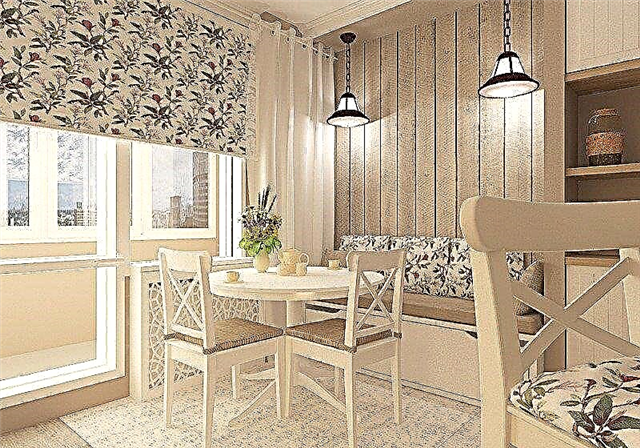
- Blockhouse Under this name is a lining that simulates round logs; for this, its outer side is made in the form of a semicircle. The profile has the following parameters: length from 2 to 5 meters, thickness - 3.6 cm, width depends on thickness (9-19 cm). For the manufacture of boards using conifers.

- American. It looks like a bar made of wood. The profile is made in the form of a rectangular trapezoid. The thickened part, where the thickness is from 2.2 to 4 cm, has a groove, in the narrow part (from 1.4 to 2.8 cm) there is a tongue.

Lining painting
Walls covered with a simple clapboard are not suitable for all styles, so it is often necessary to paint wooden boards with a color suitable for the interior.

The problem of painting is especially acute among owners of a country house, since it is there that this method of cladding is most often applied.

Some people believe that no compounds should be applied to the inner lining, however, not in all conditions it will be able to maintain its appearance without them.

With poor ventilation, a tree may turn blue, grayish under sunlight. There are methods to deal with these problems: the blued boards are treated with oxygen or chlorine-containing compounds, and then coated with protective compounds.
Grinded wood is ground to its original appearance, but without coating the tree will soon turn gray again. Therefore, painting boards immediately after installation will be the right decision.

Liquids for wood protection are available in the form of:
- Protective compounds. Fluids for external treatment contain protection against UV radiation, which helps to slow down the photoaging of wood, prevent the formation of a gray tint. Some of the protective liquids may, due to a chemical reaction, color the wood with a bright color, which can only be removed with opaque paints, so you need to carefully choose the impregnation.
- Tinting substances. They create a light shade, while not overlapping the woody pattern. A film does not form on top, the tree does not lose its vapor-permeable properties. Stains contain different amounts of coloring matter, which is why they are weakly or strongly pigmented. If you want to preserve the structure of the tree, it is better to choose a composition with a weak pigment, which will allow you to control the degree of visualization of the wood texture.

- Varnish. Water-based varnishes, which can be glossy, semi-gloss or completely without reflection of light, are popular. You can add color to some varnishes. Scuba form a vapor-permeable coating, and at the same time protect against pollution. Manufacturers add bactericidal components and filters that protect against UV rays. Scuba fit for balconies, country houses, baths.
- Inks. They form a dense coating through which a tree pattern is not visible. Paints are represented by a rich assortment, they produce ordinary oil formulations, as well as more complex ones - latex and acrylate.
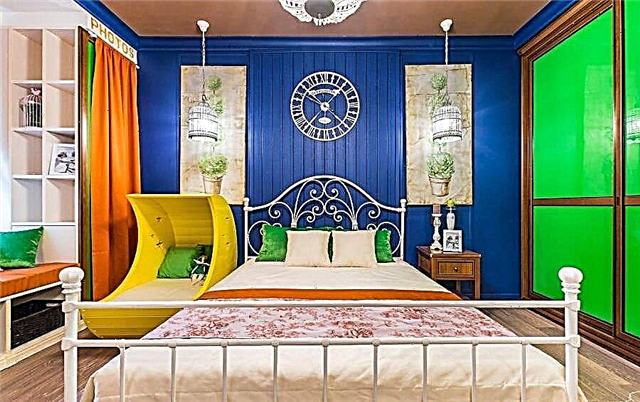
- Oils for wood. They are released transparent or with pigment. They do not form a film: wood fibers absorb oil well. Their effect is similar to the effect of varnishes: they protect against damage, prevent the penetration of dirt. Oils create a matte finish.

Painting Rules
Coating panels with paint consists of several stages, the strict implementation of which will ensure a long service life of the painted surface.
Stage 1. Boards are checked for defects, all damaged elements are rejected. Spoiled boards are useful for testing shades, determining the number of layers.
Stage 2. Panels that have been sorted are sanded to a smooth state. It is better to use a grinding machine, but sandpaper attached to the beam is also suitable. Sandpaper should be with a grain size of 240-290. Grinding is carried out in a circular motion, process the front side, groove, tenon. The inside can be left untreated.
Stage 3. The coloring composition is applied with a brush or roller. A small amount of paint is distributed in short strokes along the bar, then shaded.
Stage 4. After uniform coloring, the boards are left to dry.
Stage 5. When working with varnishes or paints with a dense structure, it is necessary to grind the surface again.
Stage 6. A second coat of material is applied and allowed to dry.
To preserve the wood structure, pigmented oils, azure or wax are used. First, the coloring composition is fragmentarily applied to the entire length of the board, then the brush strokes are smeared and left to soak for 7-10 minutes.
To develop a wood pattern, most of the oil coating is erased with a soft cloth. Due to this, pigment remains in the furrows, but it is almost absent in convex places. In the decor, this type of painting is used for the internal surfaces of the building.

Modern paints and varnishes allow you to get the effect of a two-color lining with a pronounced texture. For the first layer take a dark shade, for the second - more saturated or white. Cover the board with the first layer, leave for 10-12 minutes, and then wipe the excess with a lint-free cloth.
Leave to dry for a day. Then they cover with light-colored oil, after 10 minutes they are treated with a spatula, left to dry for 24 hours.

Ideas for coloring
Painting the lining inside the house has many variations: photos of the interiors will show a variety of existing ideas. One of the novelties of decoration was the combination of smooth walls and wood paneling.

A combination of boards of various thicknesses looks unusual. Thin panels are inserted between the wide ones, and then the boards are painted with the same color, but with different intensities.

From flat boards and eurolining form waves or depressions on the wall. To emphasize the lighting zones on the walls, you can play with color: near the lamps, the lining is painted with light paint to highlight this area.

Lining on massive ceilings is whitened, and the beams are covered with dark paint. The room looks modern, despite the usual lining materials.

In showers and bathrooms, wooden cladding also has a place to be. It is important to make high-quality ventilation of the room and treat the boards with moisture-resistant impregnation. Warm shades of wood around the perimeter and bright tiles on the floor will give the bathroom a spectacular look.

For the bedroom of the child, you can make a painting on the lining. After drying, the resulting picture is coated with varnish / oil without color.

Painted lining in the interior when decorating the premises is suitable for admirers of natural materials in the interior. A large selection of panel painting methods will allow you to create an exclusive wall covering that will protect the lining from damage and extend its service life.
Advantages and disadvantages
The material has a natural structure and fits perfectly into the environment. It is not difficult to change its color with the help of paint, the choice of which is huge. Using different colors and their combinations, it is possible to achieve interesting results.
Main advantages:
- durability of operation,
- environmental friendliness:
- additional thermal insulation
- simple installation without the need for specialists,
- affordable price.
Wooden lining is perfectly combined with any materials. It will help create an exceptional home environment.

Clapboard room design

Decorating a room with a wooden lining
There are some disadvantages of the finishing board:
- It is perfect for private households, but wood is easily ignited. Before use, it is carefully treated with flame retardants.
- Under the influence of moisture, the tree begins to collapse. It is impregnated with special substances to ensure resistance to decay processes. This increases the longevity of the skin.
Even housing in a metropolis will look like a luxurious estate, if the cladding is lined. A unique atmosphere will turn out with a good choice of lighting, mirrors and furniture.

Lining with a pattern

Wooden lining in the interior of the room
The interior of a country house
Home decoration requires attention from the owners. High-quality finish will provide coziness and comfort. Lining in harmony with painted surfaces, wallpaper, objects.
The most popular is the Provencal style. A wooden lining complements the rough floor and plastered walls. She looks great in the interior of a country house. Fashionable and practical choice will change the angle of perception, save from template forms.

Room interior with wooden lining

Bedroom with wooden lining
The use of such a cladding is due to a combination with the available design components. An important factor is the artistic and architectural solution. It depends on him how the wooden components will interact with other materials.
Today it is possible to use such cladding in the bedroom, living room. It will create a special atmosphere of warmth. One of the walls is made accent, it attracts attention, being the starting point of the whole situation. The natural color of the skin will become the backdrop for the paintings.
This option is also appropriate in the bathroom, it will turn it into a real corner of relaxation. Small rooms will benefit from textured surfaces. Non-standard and unlike each other types of design will allow you to find an individual solution.

Solid wood clapboard room

Room interior with wooden lining
Lining in the interior of the kitchen
Such panels completely decorate the room, but you need to make a bright accent. They highlight the dining area, and are used to decorate work sites. After coating with a moisture-resistant composition, care will be simple.
For French classics, country style, the location of the material is only at the bottom of the walls. Wallpaper is glued to the rest of the surface, painted. There are other options. Lining installation is carried out only where the kitchen set is installed. Its vertical arrangement will visually increase the height of the room. If you want to expand the space, then stop at the horizontal version of the casing.

Bedroom with white lining
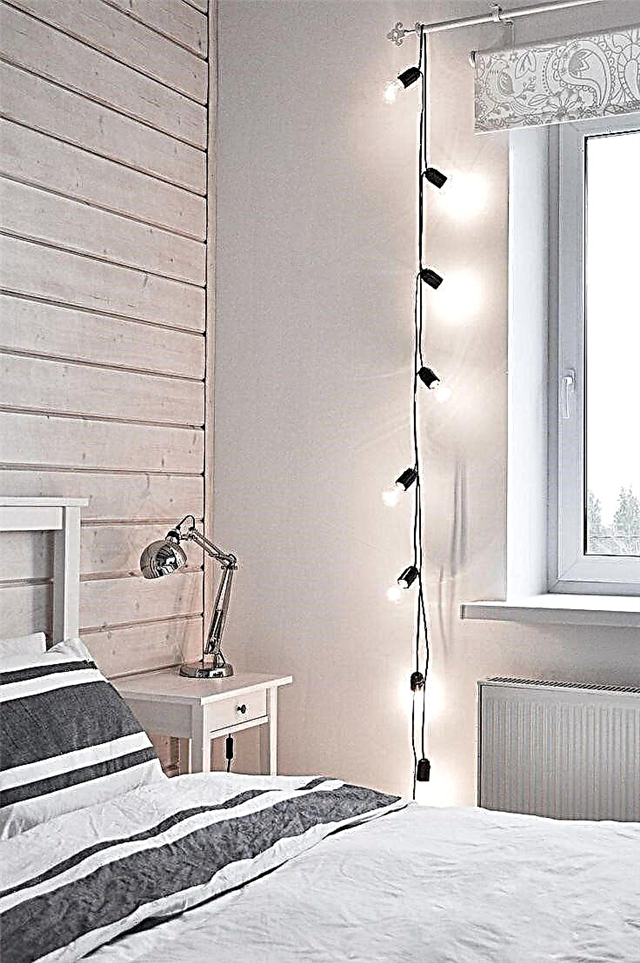
White lining in the interior of the room
Attention is paid to facades, it is better to choose smooth products. The upper sections are often replaced by shelves to make the room more concise. If you decide to design a room in an eclectic style, it is better to use a lining for one or two walls. In this case, the horizontal direction of the material texture is selected.

Multi-colored lining

Wooden lining in the room
Painted lining
This decoration opens up a wide choice for the owner of the house, everyone can find an individual solution. Wooden lining lends itself to additional processing. Thanks to this, the room can be decorated in the chosen style, to place accents. Painting makes the boards more resistant to environmental influences. The procedure can be carried out at home. For this, various types of paints and varnishes are used. Periodically, you need to update the coverage.
For the ceiling space choose a wide board. Painted lining looks harmonious. Get the desired effect help contrasting shades, changing the direction of installation of parts. If you use a transparent composition, the wood texture will become more expressive. Wooden lining in the interior is slightly tinted.

Bright white lining in the interior of the room

White lining in the interior of the bedroom
Acrylic glaze serves as an intermediate layer or is used as a topcoat. The lining is painted in an inconspicuous place to make sure that the tone is selected correctly. Some compounds are tintable, this is indicated by the manufacturer in the instructions.
The use of two colors will relieve the monotony of the design of a country room with a lining. To do this, the boards are painted in different shades, alternating them. Semi-matte compositions hide the texture of the wood, but the relief will remain on the surface. Patinating agents are popular, allowing you to get antique-decorated details.

Design of shower room with clapboard

Lining in the interior of the room
Lining: decor ideas
Using time-tested material, you can implement unique projects. Owners of private homes are concerned about how to decorate the lining. Get an unusual texture will allow paint, designers recommend applying it with your hands. Processing of individual elements is carried out before they are attached to the base. The interior of the lining of lacquered or matte light color provides an amazing effect. The layout of the boards may be different.
A unique texture is obtained thanks to a blowtorch. This decor was first used in Japan. A combination with plates or finishing only part of the wall of the room is eye-catching. For such purposes, light options for pastel shades are selected. They are surprisingly combined with bright furniture in the interior of a country house. The top edge of the board is decorated with baguette.

Wooden lining in a bathroom
Walls from the lining in the interior with lighting will stand out. The material is often used in the style of Provence. It is specially aged with paint to create an atmosphere of soulfulness. The fashion trend is the use of a mirror on a bright wall, but it is better to purchase several products and make a composition.
The classic solution is the interior of the house, sheathed in white lining. A fresh and unbanal solution is to finish the ceiling. This will create a special atmosphere in the room. Lining will be an integral component of the Scandinavian style. It will organically fit into the design with large ceiling beams, natural and artificial stone. The use of wood paneling opens up almost limitless possibilities. With its help it is easy to translate any design ideas into reality.
Scope of application
The products are used for both external and internal decoration. Most often, the area of operation of products depends on the type of board.
You can note the main applications of wooden products.
- Pine or spruce products are recommended for interior decoration. Such products can be operated at a low level of humidity, and temperature from -5 ° С to + 30 ° С.
- The board from an alder or linden perfectly transfers high temperatures and humidity.
- Larch can be used to sheathe buildings from the outside, since the wood does not deform and tolerates temperature fluctuations in the range from -50 ° С to + 50 ° С, at a 100% level of air humidity.
Such material as wall paneling is in demand not only for arranging baths and saunas, arbor on a personal plot, guest houses, verandas and terraces are sheathed with a board. Inside the house, products can be found in the interior of bedrooms and living rooms, as well as kitchens and bathrooms. As for children's premises, in such cases it is recommended to purchase linden products, which are rich in tannins and have a beautiful shade.
This material is divided into types based on a large number of criteria. First of all, this applies to the type of wood used for production.
The following product categories are distinguished.
- Lining from needles. It includes a board of cedar, spruce, pine. Raw materials release tar, which positively affects its resistance to external factors.
- Products from hardwood varieties: alder, ash, linden. Similar products are recommended for interior decoration. Linden has proven itself in the arrangement of steam rooms, since the wood practically does not heat up during operation.
- Lining from expensive varieties of wood. For its manufacture use oak or beech. Products from this raw material belong to the category of elite building and finishing materials, which are of high cost.
Taking into account the profile of the board, the classification of products is as follows.
- Standard products - are panels with a flat base. The walls sheathed with such material visually look like an absolutely smooth surface.
- Softline lining - it is distinguished by rounded corners, so that the base acquires a certain texture.


- Landhouse - is made with longitudinal recesses on the surface.
- American - finishing with such products resembles overlapping panels. Such a system of arrangement of boards provides good protection against precipitation.
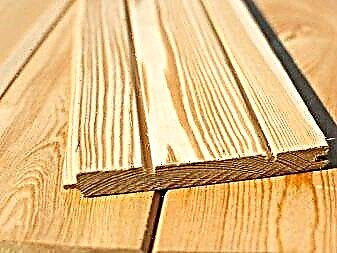

- The block house imitates the decoration of the walls with a log, the structures lined with such material resemble wooden log cabins.
- For interior decoration on sale, you can come across "wooden wallpapers", which are presented in a wide range of types.


- Eurolining - products differ in the size of the fastening elements of the board. Products are made from high quality materials using advanced technologies, which affects the cost of panels ready for installation.


Varieties of wooden products are distinguished based on the class of raw materials.
- Extra-class products: for the production of products a tree is used that does not contain cracks, knots and any other defects.
- Class “A”: lining should not have more than one knot per 1.5 meters of finished lumber. However, the board may contain cracks and tar pockets.
- Class "B": products can have no more than 4 knots per unit of measure.
- Class "C": this category includes inexpensive products that have cracks, tar pockets and other errors on the basis.

Dimensions
Wooden lining can be of different sizes, in addition, the dimensions and weight of products from eurolining will differ from other varieties of products. As a rule, the size of the products is determined by the manufacturer.
You can highlight the most common parameters.
- Euro lining dimensions. The width of the products is represented by the following values: 80 mm, 100 mm, 110 mm, 120 mm, the length of the boards is 0.5-6 m, the thickness is 13 mm, 16 mm, 19 mm, while the spike has a size of 9 mm. All of the above dimensions can have tolerances of +/- 0.5-5 mm in each case.
- The remaining types of lining are presented in the following sizes: the width of the products varies between 76-200 mm, the length is from 0.2 to 6 m, the thickness of the boards is 12-40 mm, the size of the tenon is 5 mm.
Based on the length of the product, wood panels are divided into long and short. The last type of material can be sheathed roofing overhangs or doors. In addition, small boards cost an order of magnitude less.

Mounting technology
The process of cladding walls with lining includes the following works: preparation of the base, fasteners of panels, finishing. The main requirement that must be taken into account when planning to nail any kind of wooden lining to the walls is the condition of the substrates - the surface must be perfectly even. Since in reality it will be difficult to meet such a wall in a house or apartment, it is worthwhile to take care of creating a wooden or metal frame.
A similar design can also be useful for additional thermal insulation of the room, since heat-insulating material can be laid between the profiles and any base, whether brick or concrete.
Sheathing of surfaces is carried out according to the following method.
- Installation of products can be performed both in horizontal and vertical position on the frame. In addition, it is often possible to meet products laid in a herringbone or diagonally. Mounting options are completely dependent on the preferences of the owners of the building. However, for steam rooms it is necessary to opt for a vertical arrangement of boards.
- The installation of the lining to the crate is carried out using nails, dowels or staples, sometimes it is mounted on self-tapping screws. For work with the ceiling, several types of fasteners are used at once, most often they are kleimers and screws.
- Mounting starts from the corner of the room. If kleimers are used for installation, the part must be pushed into the groove of the lining, after which nails should be driven into its holes. The subsequent board is installed in the same way - a new river is inserted into the groove of the previous product and secured with a kleimer.
- When performing the installation of the material with nails or self-tapping screws, the element is hammered obliquely into the board. Then it is necessary to mask the fasteners on the base of the lining.
- The final finishing of the material involves painting or staining the wood for a harmonious combination with the interior of the room. The panels can be painted in any shade you like, ranging from white to bright and rich red or green colors.
- In addition, such a finish needs to close the edges on the lower and upper sides. To do this, use special accessories - this can be a regular baseboard (fillet).
Refusing the “bath effect” in the decor is easy!
1. Mute the yellowness
Wooden decoration of the house can be anything - romantic, airy, elegant. But first, you need to rid the lining of a dull yellow hue. To do this, the board can be painted, or it can be whitened (tinted), preserving the woody pattern. The main thing here is to choose a tone that leaves a feeling of naturalness, but it will be unobtrusive naturalness.
Tip: Do not rush to varnish the boards in the hope of “fixing the color” - it is the varnish that in the end creates the unique feeling of a dressing room.
4. Make the lining an accent
But the same trick, but vice versa: light ash panels act as an accent in a smooth white bathroom interior.
By the way, do not be afraid to use the board in the bathroom. If the ventilation in the house is working properly, and the tree does not have direct contact with water - this is permissible.
12. The wealth of gray
Do not underestimate the gray color, starting a renovation of a country house. It has a lot of shades, cold and warm, simple and complex - and everything looks good on a tree, as in the photo.
Tip: When using wood on ceilings and walls, remember that the lining will expand and contract depending on the humidity level in the room. So that you do not have to redo the repairs in the house due to cracks at the joints, lay backlash and accept the "natural imperfections" of the tree.
On the picture:tinted brushed oak panel
16. Set the dynamics
But there are more to come. So, the diagonal placement introduces dynamics into a calm interior, as does the alternation of multidirectional stripes.
17. Break the dull background
In addition to mirrors, images in oval frames do a good job of this — the contrast works not only in color but also in shape.
In the photo: wallpaper with an imitation of a board, but it’s easy to imagine in their place an ordinary lining with effectively peeling paint
18. Village theme
Mirror is the most popular way to relieve pressure on a blank wall. Frames in a rustic style, for example, in the form of a window with shutters, will look great on a wooden background.
27. Pastel colors
The pastel colors will make the wooden paneling romantic and light: lavender, sand, blue-gray, pale lime, etc. Pastel goes well with wood. For decoration in Provencal style or in the spirit of the "old cottage" - that's it. Against such a background, round tables, wicker chairs, flower shades and other attributes of the philistine happiness of the past will look wonderful.
28. Lining in the color of the kitchen
In this project, manufacturers of wooden facades mistakenly sent half of the order in milk color, and half in grass. Using cunning coloring of the lining and rearrangement of the facades, the designers made the bottom of the kitchen grassy, and the columns and top dairy. It turned out fresh and contrasting.
29. Ceiling and headboard
You can combine not only wood and drywall, but also wooden elements among themselves. In this bedroom, the lining ceiling echoes the oak massif headboard.
32. Attention to larch
Larch flooring is the most interesting alternative to wood panels. The walls from such a board painted with translucent glazing paints look especially impressive. Board fasteners are made using parquet technology (Spax countersunk screw).
Tip: Multilevel plasterboard ceilings are well combined with such a wall. However, the ceilings should be independent of the walls, and connected to them on sliding fasteners - otherwise, cracks from the movements of the tree cannot be avoided.
34. Panels in the lower third of the walls
Wallpaper looks cozier than paint, but it also goes well with clapboard, especially if panels are made from it at the bottom of the wall - as in the project of Galina Yurieva in the photo. In addition, this decision decently reduces the cost of home repairs.
37. Multi-colored boards
In this project of the children's room, designer Elena Kindtner suggested painting the boards on the ceiling with multi-colored varnishes. The design came out not only original, but also due to contrasting combinations - volumetric.
39. Brushed boards
The wood panels in this project are from heat-treated pine lining. It was additionally brushed (aged in a special way, removing soft fibers from the top layer of wood) and painted white with a worn effect. Thus, the effect of a long-lived premises is achieved.
44. False lining
If the interior concept requires a wooden texture on the kitchen apron, take a look at porcelain stoneware imitating a wooden lining. It is more practical than a board.
Evgeny Ozhog
I love wooden interiors and natural furniture. We bought a kopeck piece in Samara 50 squares. The walls in the corridor are decorated with imitation of timber, and the rest of the walls and all the ceilings are lining calm, larch material, third grade. Coating - Acrylic-urethane parquet lacquer Parade (one and a half thousand for 2.5 liters) with white concentrated stain Sayerlack (240 rubles per 100 g, bred from 1/10 to 1/20), exposed fibers on a white background after polishing - rustic charm , while there is no hint of yolk that is given by white spirit or drying oil. Lining width 135 mm. Colleagues, it turned out a wooden interior made of larch at a price cheaper than wallpaper of domestic manufacturers. The price of a running meter of lining of the third grade is 56 rubles, a square meter - 415 rubles. For slopes I used furniture panels. Solid handmade. There was no smell when painting.
- Like | eleven





